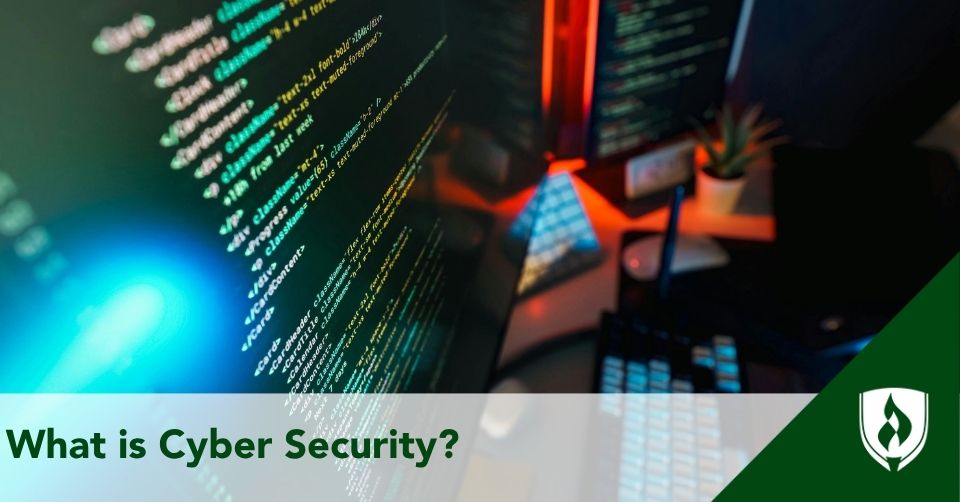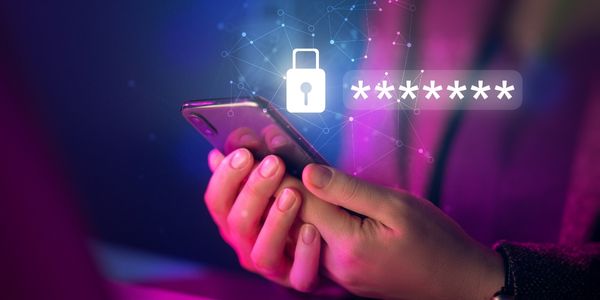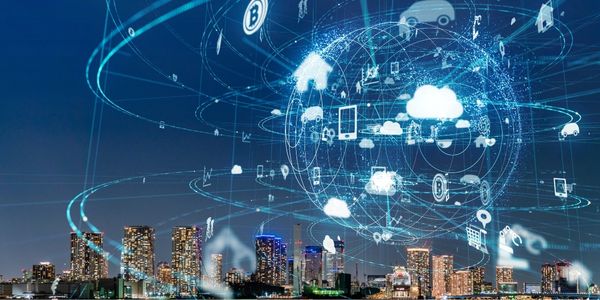What Is Cybersecurity?
10/28/2025

When you think about the technology you use every day, every program and device relies on some sort of computer systems to store and move sensitive information, which makes them a target for cyber threats and cyberattacks. That’s where cybersecurity comes in. Often called IT security, it’s about protecting1 systems, computer networks, and critical data safe from anyone trying to gain access without permission.
Cybersecurity isn’t just about running antivirus software or changing a password. It’s a combination1 of security measures for software, hardware, and networks, along with physical protections to prevent unauthorized access. A thoughtful approach to cybersecurity helps safeguard critical systems, customer data, and confidential information, while keeping information security strong and security risks under control.
Understanding Cyber Threats
Cyber threats come2 in many forms, targeting both individuals and organizations. Common types of cyber threats3 include malicious software, malicious code, phishing attacks, denial of service attacks, and attempts to gain access to sensitive data. These threats can disrupt normal business processes, steal data, and cause serious damage to critical systems. Even a single instance of human error like clicking a suspicious link or using weak passwords may open the door for cyberattackers.
Some cyber attacks are designed4 purely for financial gain, such as ransomware, which encrypts critical data and demands payment for its release. Other attacks may aim to compromise identity security, steal confidential information, or disrupt essential services. Understanding these threats is essential for implementing effective cybersecurity measures and maintaining information security across an organization or personal environment.
Cybersecurity professionals, such as information security analysts, are typically responsible5 for detecting attack vectors, responding to security incidents, and monitoring emerging threats. They design security architectures, manage security controls, and aim to safeguard authorized users can safely access systems while keeping cyberattackers out.
Protecting Critical Infrastructure
Critical infrastructure, including hospitals, power plants, transportation systems, and government facilities, is especially6 vulnerable to cybersecurity threats. A breach in these systems could disrupt essential services, compromise critical data, and even threaten public safety. Agencies such as the infrastructure security agency provide guidance for implementing effective cybersecurity measures to protect critical systems from cyberattacks and security breaches.
Security measures for critical infrastructure include network security, endpoint security, and application security. Network security prevents unauthorized users from gaining access to digital assets, while endpoint security protects devices like mobile devices, laptops, and servers from malware and malicious code. Application security ensures that software and operating systems are robust against cybersecurity risks and reduces the chance that attackers can steal sensitive data or interrupt normal business processes.
Regular security awareness training is essential for authorized users. Even well-designed systems can be compromised if users are unaware of security threats like phishing, social engineering, or weak passwords. Training helps reduce human error, which remains one of the most common causes of security breaches.
Cloud and Endpoint Security
As organizations move more services and data into cloud environments, cloud security has become essential. Protecting data, applications, and customer data in the cloud requires7 security solutions such as access controls, encryption, and role-based access control. These measures help prevent unauthorized access to sensitive information and reduce the likelihood of data breaches.
Endpoint security complements cloud security by protecting7 devices that connect to networks, including laptops, mobile devices, and desktop computers. Measures such as antivirus software, multi-factor authentication, and regular security patches help prevent malicious software and malicious code from compromising critical systems.
A comprehensive security strategy integrates cloud security, endpoint security, and network security, ensuring that sensitive data is protected at every level. By doing so, organizations can minimize exposure to cybersecurity threats, including new attack vectors, and maintain a secure system across the entire IT infrastructure.
Application Security and Common Cyber Risks
Application security focuses on protecting8 software applications and operating systems from cyberattacks. Vulnerabilities in applications can allow cyberattackers to gain access to confidential information, interrupt normal business processes, or steal data.
Best practices8 for application security include installing security patches, maintaining role-based access control, and designing a strong security architecture. Implementing zero trust security principles, which assume no user or system is inherently trustworthy, provides an additional layer of protection against cybersecurity risks.
Organizations also need to be aware of emerging threats9 such as phishing attacks, identity theft, and cyber crime, which can exploit software weaknesses or social engineering. A proactive approach to application security reduces the risk of security breaches and protects critical data, sensitive information, and identity security.
Best Practices for Cybersecurity
Effective cybersecurity measures combine technical solutions with human vigilance.
Some common best practices for families9 and organizations10 include:
- Strong passwords and multi-factor authentication to prevent unauthorized access.
- Regular updates and security patches for operating systems, applications, and devices.
- Security awareness training to help people identify security threats and avoid human error.
- Routine security audits and risk assessments to uncover vulnerabilities and inform security solutions.
Organizations can also leverage9 managed security services to monitor for security incidents, detect cybersecurity threats, and implement effective cybersecurity measures.
By following these best practices, organizations9 can enhance identity security, reduce exposure to cyberattacks, and maintain the integrity of critical systems.
Cybersecurity Professionals and Their Work
Cybersecurity professionals typically maintain5 information security across computer networks, critical infrastructure, and critical data. Information security analysts and other experts continuously monitor for emerging threats, implement security controls, and respond to security incidents.
Their work may include:5
- Implementing access controls and security technologies to prevent unauthorized access.
- Managing entire IT infrastructures to detect malware and malicious code.
- Designing security architectures and role-based access control policies to protect confidential information.
- Conducting security awareness training to reduce human error and reinforce safe practices.
Cybersecurity professionals play a proactive role5 in adapting security strategies to emerging threats, attack vectors, and the evolving landscape of cybersecurity threats.
Emerging Trends and Challenges in Cybersecurity
As technology evolves, cyber threats are becoming more sophisticated. Cloud environments, mobile devices, and interconnected industrial systems are all targets for cyberattacks. Attackers may attempt to gain access to sensitive data, steal critical data, or disrupt normal business processes.
In 2025, IBM® predicted11 that cybersecurity will become increasingly defined by the tension between AI’s benefits and its risks. “Shadow AI” (unauthorized AI tools adopted by staff) will emerge as a significant threat vector, demanding that organizations impose governance, training, and detection controls. At the same time, identity security will evolve into the new perimeter model, with enterprises creating unified, product-agnostic identity “fabrics” to manage access across hybrid and multicloud environments.
But AI-driven risks aren’t the only concern:11 Quantum computing will force a shift toward post-quantum cryptography, and organizations must build “crypto agility” to adapt quickly. IBM also foresees that AI-assisted attacks (e.g. smarter phishing or malware variants) will dominate in the near term, even as fully AI-powered threats loom. To stay ahead, security efforts will have to be deeply collaborative across teams and tightly integrated into business strategy, rather than siloed within IT.
The Importance of Cybersecurity
Understanding what is cybersecurity is crucial in today’s digital world. Cybersecurity measures and protects1 critical infrastructure, sensitive information, and essential services from constantly evolving cybersecurity threats. By implementing effective cybersecurity measures, leveraging security solutions, and remaining aware of emerging threats, organizations and individuals can maintain secure systems, protect critical data, and reduce security risks.
From cloud security and endpoint security to application security and network security, a comprehensive security strategy ensures that computer networks are protected, cyberattacks are detected early, and unauthorized access is prevented. Cybersecurity professionals and managed security services provide guidance, expertise, and ongoing vigilance to maintain information security across the entire IT infrastructure.
Implementing strong passwords, multi-factor authentication, regular security updates, and continuous security awareness training helps authorized users reduce human error and protect confidential information. By understanding cybersecurity risks and taking proactive steps to protect systems, everyone can contribute to safer digital environments for organizations, communities, and individuals alike.
1Cybersecurity and Infrastructure Security Agency (CISA), “What Is Cybersecurity,”https://www.cisa.gov/news-events/news/what-cybersecurity (accessed September 30, 2025).
2National Institute of Standards and Technology (NIST) Computer Security Resource Center, “Cyber Threat,”https://csrc.nist.gov/glossary/term/cyber_threat (accessed September 30, 2025).
3Commonwealth of Massachusetts, “Know the Types of Cyber Threats,”https://www.mass.gov/info-details/know-the-types-of-cyber-threats (accessed September 30, 2025).
4Ready.gov, “Cybersecurity,”https://www.ready.gov/cybersecurity (accessed September 30, 2025).
5Bureau of Labor Statistics, U.S. Department of Labor, Occupational Outlook Handbook, Information Security Analysts, at https://www.bls.gov/ooh/computer-and-information-technology/information-security-analysts.htm (visited September 30, 2025).
6Cybersecurity and Infrastructure Security Agency (CISA), “Critical Infrastructure Sectors,”https://www.cisa.gov/topics/critical-infrastructure-security-and-resilience/critical-infrastructure-sectors (accessed September 30, 2025).
7Fortinet, Cloud Toolkit (PDF),https://www.fortinet.com/content/dam/fortinet/assets/toolkit/cloud-toolkit.pdf (accessed September 30, 2025).
8BSA | The Software Alliance, Framework for Secure Software Updates (2020) (PDF),https://www.bsa.org/files/reports/bsa_framework_secure_software_update_2020.pdf (accessed September 30, 2025).
9Cybersecurity and Infrastructure Security Agency (CISA), “Shields Up: Guidance for Families,”https://www.cisa.gov/shields-guidance-families (accessed September 30, 2025).
10Cybersecurity and Infrastructure Security Agency (CISA), “Shields Up: Guidance for Organizations,”https://www.cisa.gov/shields-guidance-organizations (accessed September 30, 2025).
11IBM, “Cybersecurity Trends: IBM Predictions 2025,”https://www.ibm.com/think/insights/cybersecurity-trends-ibm-predictions-2025 (accessed September 30, 2025).



